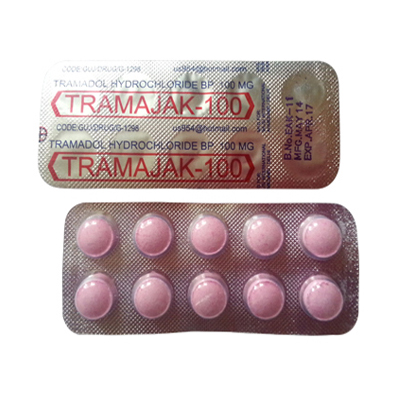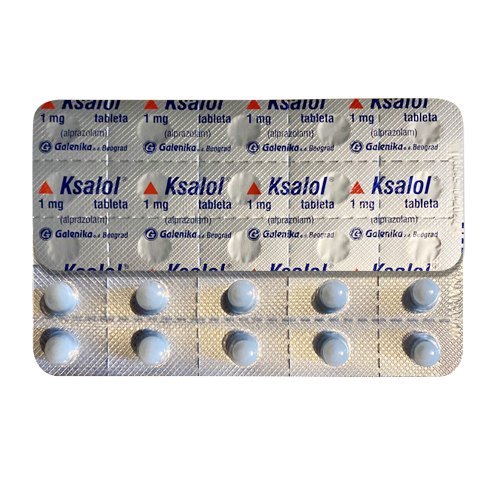Tramadol is a prescription medication that belongs to the group of pain medications called opioids. This medication works by changing the way your brain and nervous system respond to pain. It is used to treat moderate to severe pain caused by conditions such as osteoarthritis, lower back pain, or cancer. It can also be used to treat other conditions as determined by your doctor.
How to Buy Tramadol Online?
If you are searching for a place where you can buy tramadol online, then you have come to the right place. You can buy tramadol online from our pharmacy. If you want to purchase tramadol, then you should visit our online pharmacy and place an order for it. Our pharmacy sells tramadol at an affordable price. You can place an order for tramadol through our website or by calling us on our toll-free number.
How Does Tramadol Work?
Tramadol works by binding to certain receptors in your brain and spinal cord, which helps block your perception of pain. It also increases the amount of serotonin and norepinephrine in your brain, which are chemicals that may make you feel better emotionally or mentally.
The drug is available as a tablet or capsule to be taken orally (depending on the dosage), or it can be given intravenously if needed. In general terms, tramadol is considered safe when taken at the recommended doses and for the correct duration of time; however there are some situations where it should not be used at all (i.e., pregnant women).
Benefits of Tramadol
Tramadol is a prescription-strength pain reliever that can help reduce your pain and inflammation. It’s a synthetic opioid that works by binding to mu-opioid receptors in the brain and spinal cord.
The benefits of Tramadol include:
- Reduces pain and inflammation
- Improves mood, sleep, and energy levels
- Helps you relax and feel less stressed or anxious
- Works quickly, usually within an hour of taking it
Tramadol is also used to treat headaches, migraines, fibromyalgia and other types of chronic pain. It’s especially useful for people with conditions like arthritis or back pain because it has the ability to relieve both acute and chronic pain.
Tramadol comes in many different forms including tablets, capsules and liquid form. You can take it by mouth as directed by your doctor or healthcare provider.
Tramadol Side effects
Tramadol is prescription painkiller that has been used for decades to treat moderate to severe pain. It belongs to the same class of drugs as morphine and Oxycontin, but it is not as strong.
Tramadol does have some side effects that are similar to those of opioids like morphine—it can cause constipation and dizziness, for example. It can also lead to seizures if you take too much of it at once or combine it with other drugs like alcohol (source).
Tramadol can cause serious side effects when taken in high doses or with other medications. Some common side effects include:
- Dizziness
- Drowsiness
- Nausea
- Constipation
- Respiratory depression (slowed breathing)
- Confusion and hallucinations
- Seizures
The Top 10 Reasons Why You Should Use Tramadol?
Tramadol relieves pain by affecting the way your body responds to pain signals. It also affects the way your brain responds to those signals.
There are many reasons why you should use tramadol, but here are the top 10:
- Tramadol is effective in relieving moderate to severe pain
- It has fewer side effects than other opioids
- Tramadol has good oral bioavailability which means that it gets into your bloodstream quickly after taking it orally
- You can buy tramadol online without prescription from pharmacies like [company name]
- Besides being an analgesic, tramadol works as a muscle relaxant and an anti-inflammatory agent as well
- Tramadol works well for many types of pain, including postoperative pain, fibromyalgia-related pain, sciatica and postherpetic neuralgia (tingling or burning sensations).
- You can take tramadol alone or in combination with other medications if necessary for better pain relief results.
- You can get a prescription from your doctor without having to see a specialist like an oncologist or neurologist first before being given one for tramadol use only; no need for prior authorization by insurance providers either!
- The most common side effects of tramadol are dizziness, dry mouth, nausea and vomiting, drowsiness and headache (but these usually go away after a few days)
- The drug has a wide range of applications, including pain relief and treatment of moderate to severe pain associated with surgery/medical procedures.
5 Tramadol Facts You Need To Know
Tramadol is a great painkiller, but there are things you need to know about it. Here are 5 Tramadol facts that you need to know:
- Tramadol is a pain reliever.
- It works by changing how your body feels and responds to pain.
- It’s used to treat moderate to severe pain that’s expected to last for a long time or may return often (chronic pain).
- It’s also used together with rest and physical therapy to treat pain caused by surgery or cancer and as a short-term pain reliever after surgery to help you manage your discomfort until you recover from an operation.
- Tramadol can be habit forming, but that doesn’t mean it’s dangerous or addictive.
Does Tramadol Cause Nausea?
Tramadol is a medication that is used to treat moderate to severe pain. It is also used to relieve anxiety and treat depression. Tramadol can cause nausea as one of its side effects, which can be problematic if you have to take it every day. If you are experiencing nausea as a result of your tramadol use, there are several things that you can do to prevent it from occurring or reduce its severity.
What Causes Tramadol-Related Nausea?
Nausea is caused by the activation of serotonin receptors in the gastrointestinal tract. The activation of these receptors causes signals to be sent from the stomach and intestines up to the brain that trigger nausea responses such as vomiting and dry heaving. Serotonin is a neurotransmitter that regulates moods and affects appetite and sleep patterns as well. When serotonin levels are increased in the body, this can lead to feelings of depression or anxiety as well as symptoms like nausea, vomiting, dry heaving, sweating profusely or having difficulty breathing due to a drop in blood pressure levels.




